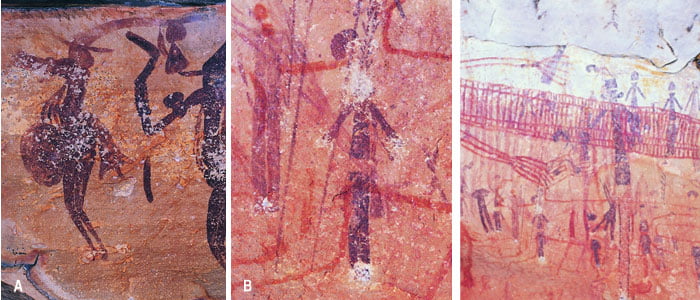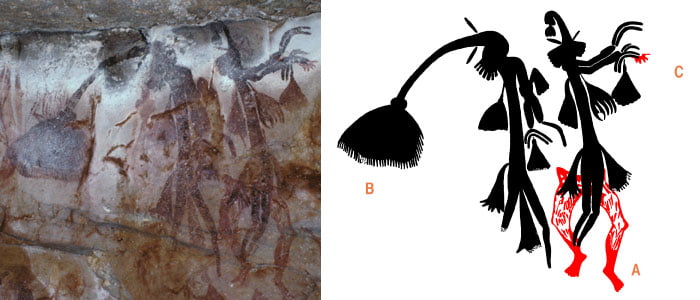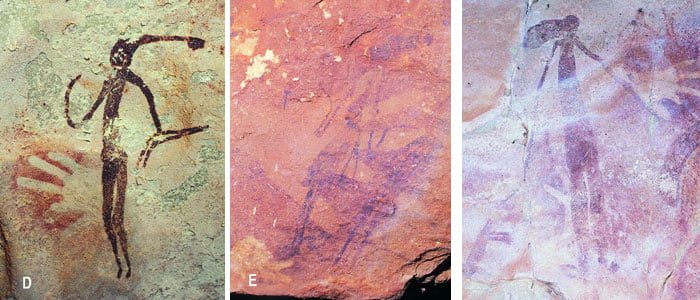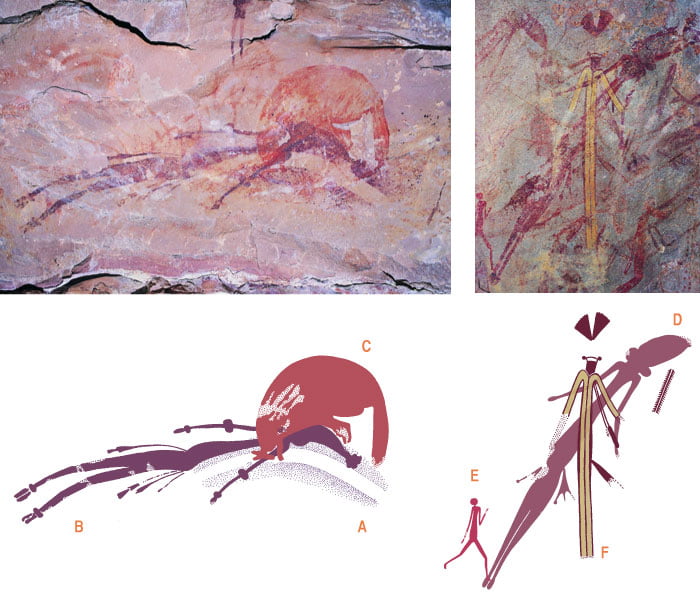An interesting aspect of recurrent superimposition involves figures from the same
Period and at times even the same Group
The determination of different groups of Erudite Epoch artists to ‘dominate’ or ‘obscure’ the artistic evidence of earlier cultures is evident in multiple deliberate superimposition sequences. This is not to be confused with variations of retouch and modification, which is a practice more commonly occurring in later art periods. The process under discussion involves the artists implementing a careful ‘replacement’ or ‘obscuring’ process, attained by carefully creating the figure so that it superimposes an earlier figure of a similar form.
This 460x1070mm superimposition example, surrounded by a large expanse of highly suitable but unused art surfaces, strongly supports the case for premeditated intent and careful positioning of images practised by early artists. The first motif is a well-stencilled Crescentic Boomerang from the Irregular Infill Animal Period (A). An artist of the Bradshaw Period has created a Tassel Bradshaw in the unusual, and in this case unnecessary, horizontal alignment, positioning it along and over the earlier motif (B). A later artist of the Elegant Action Figure Group has attempted to ‘obliterate by domination’ the key head and headdress area of the Bradshaw by the deliberate positioning of his left-facing macropod painting, and additionally by using the unusual bent-over alignment to maximise the area covered by his artwork (C).
Another example shows the earliest is the monochrome brown Acorn Bradshaw (D), which has the foot of a striding Elegant Action Figure (E) crossing its ankles at the lower left of the frame. A remarkably well preserved 570x280mm Tapering Outline variation of the Clothes Peg Figure (F) has then been depicted diagonally crossing the Bradshaw’s chest, creating a deliberate graphic ‘statement’ of cultural dominance or replacement.
The above text and images are taken and adapted from Grahame L. Walsh’s 2000 publication, Bradshaw Art of the Kimberley.








